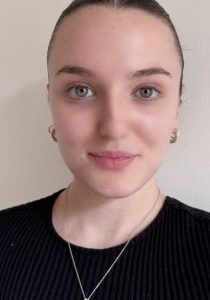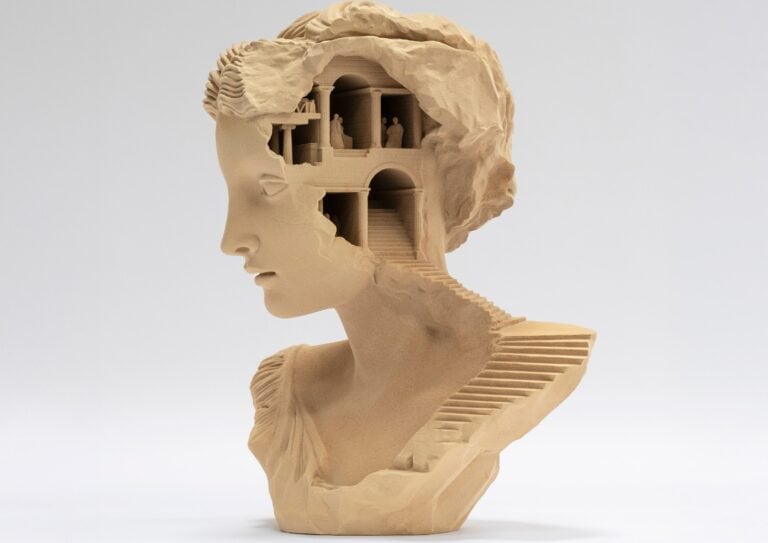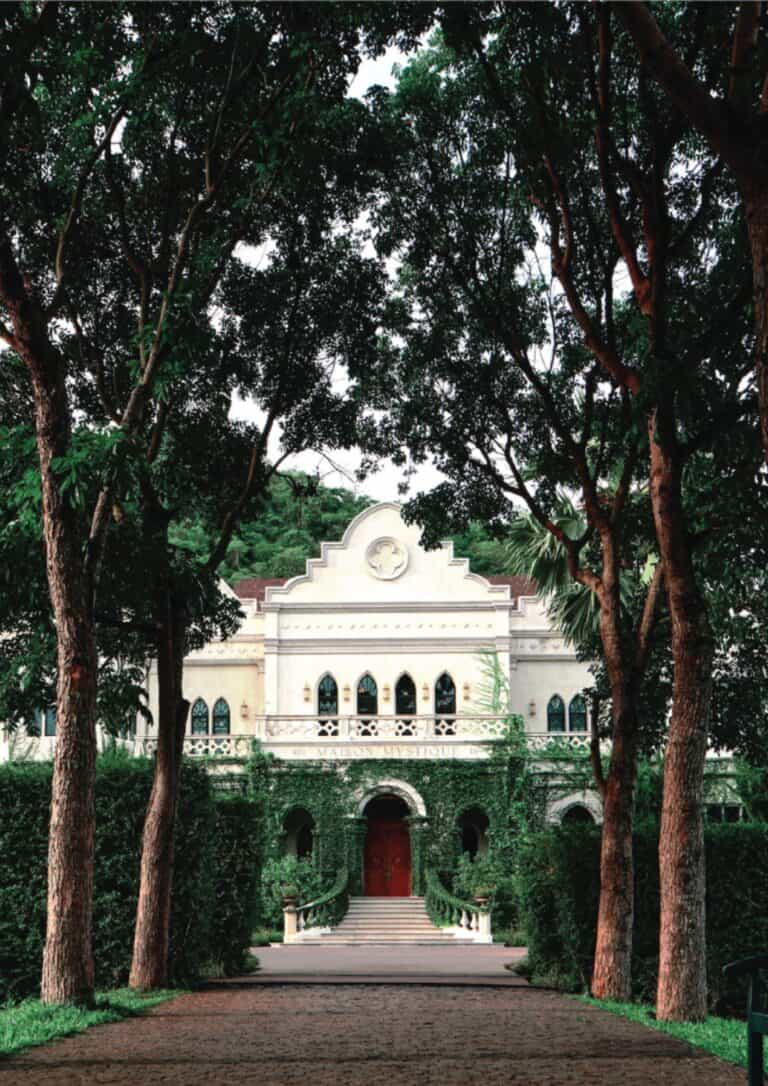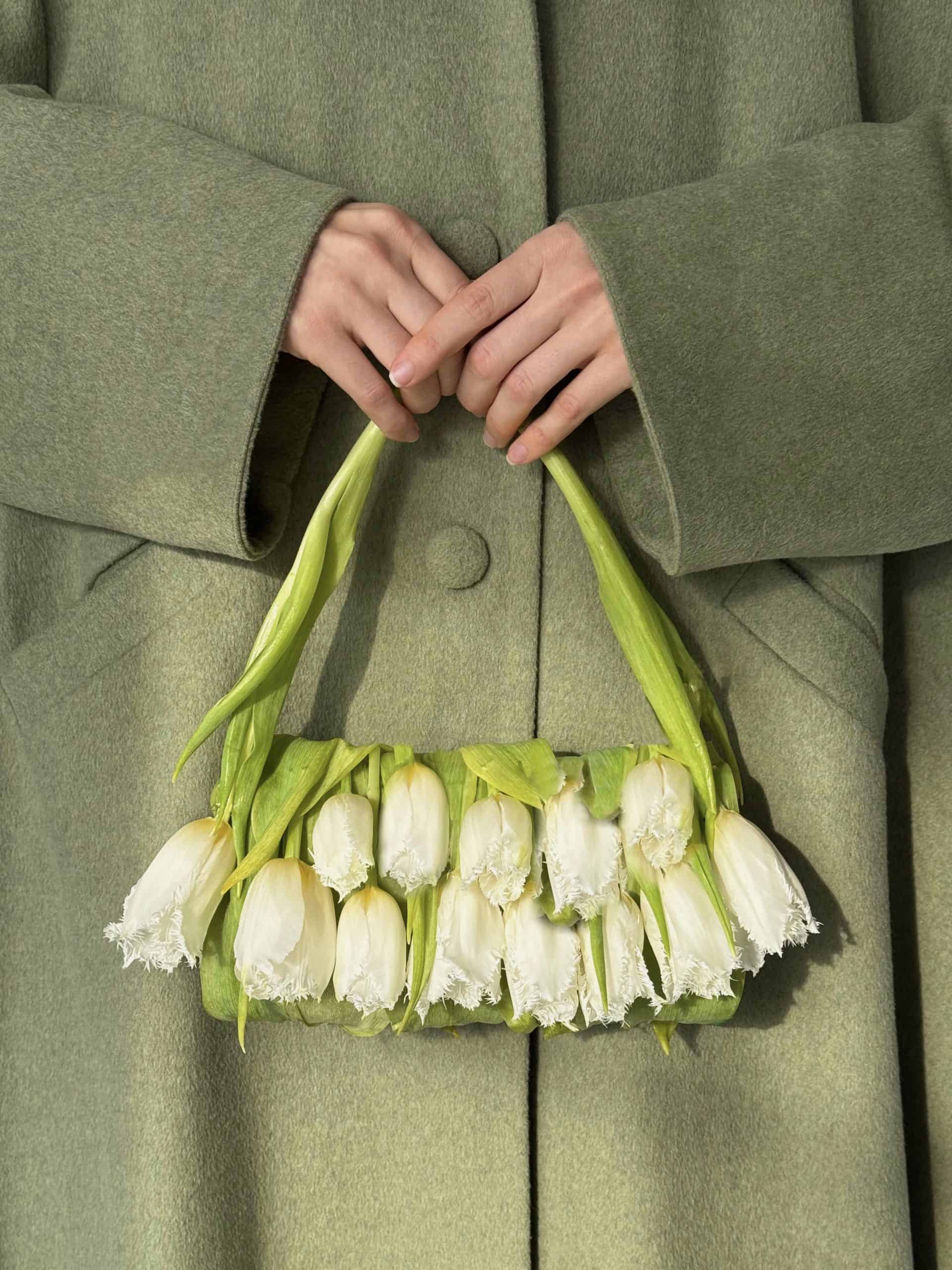
EKATERINA SHUKSHINA ORGANIC ART
Marie Loire Moulin
EKATERINA SHUKSHINA ORGANIC ART. Where vegetables, poetry, and fashion collide. Ekaterina Shukshina organic art springs from fields, forests, and childhood memory. Living in a small village, she transforms vegetables and plants into poetic fashion objects. Her practice blurs the line between art and play, always grounded in tactile encounters with nature.
Organic play
Shukshina describes herself in two ways. On one hand, she is an artist surrounded by forests and fields who rethinks natural objects. On the other, she is “a curious child who likes to play, invent, fantasize and experiment.” For her, “my creative practice is playing first and foremost.”
Organic inspiration
Her materials are drawn directly from the rhythms of rural life. Indeed, growing up in the countryside shaped her imagination. “Life in the village, a happy childhood, nature – the sources of my inspiration.” For example, she recalls endless days outdoors: picking berries and mushrooms, swimming in rivers, caring for gardens, or walking barefoot on grass. “This child was me.” Therefore, those tactile and emotional experiences became the foundation of her artistic practice. Moreover, they continue to guide her creative vision. Ultimately, her connection to nature remains inseparable from her art.
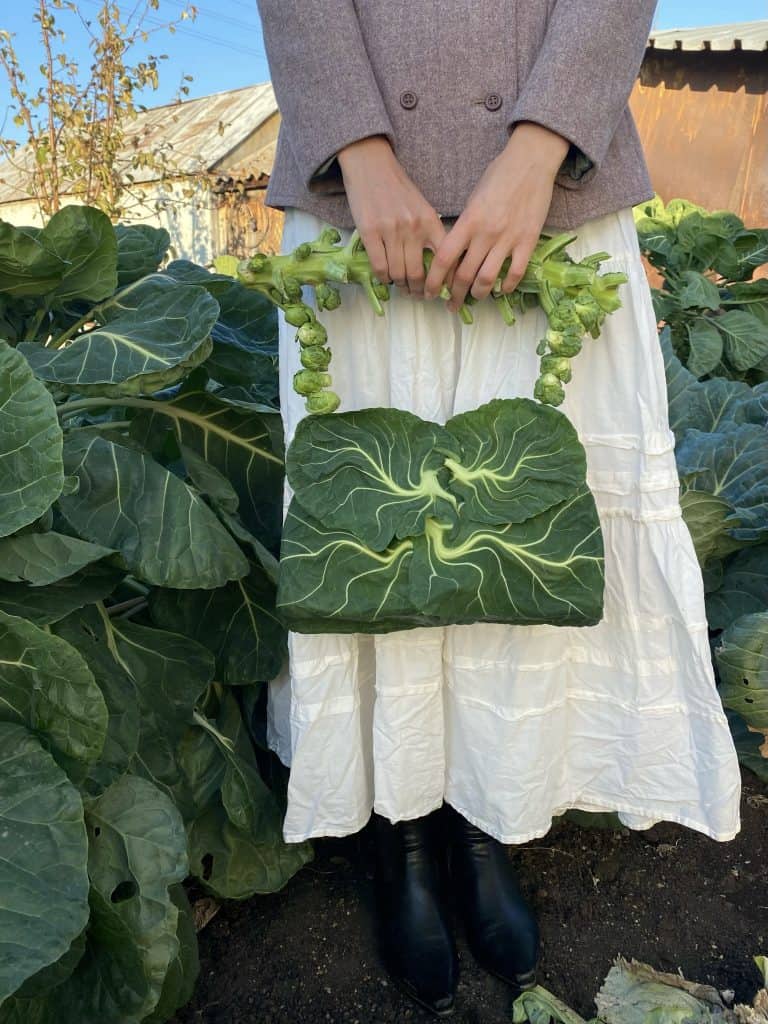
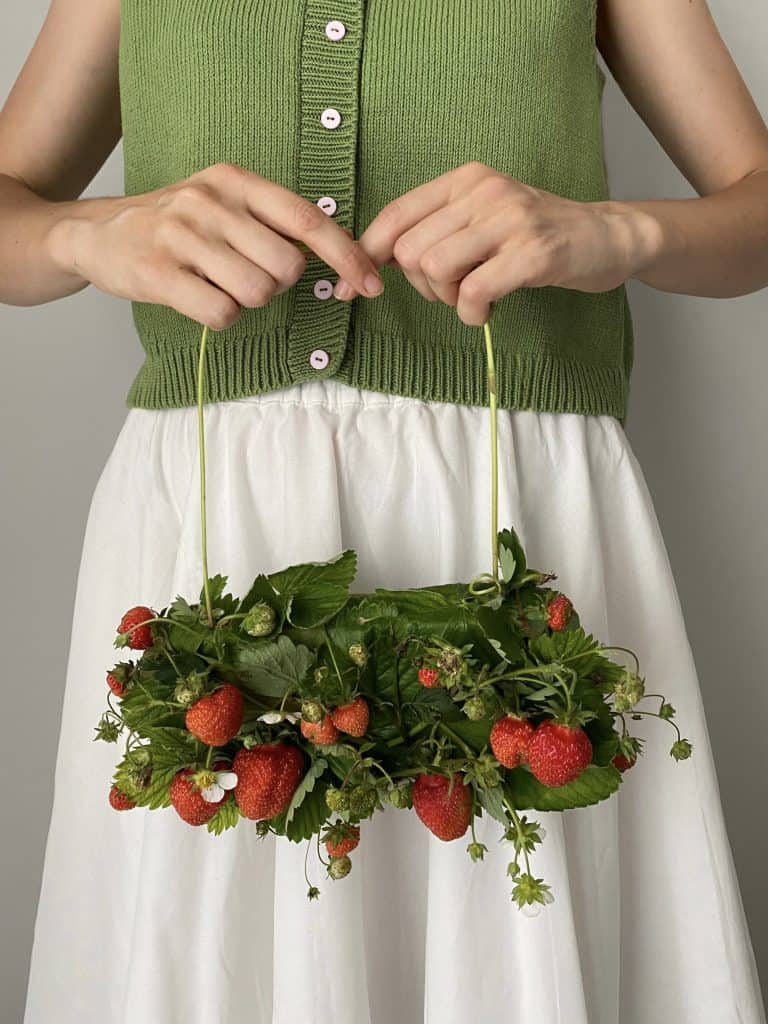
Organic works by Ekaterina Shukshina, where cabbage and strawberries become playful fashion objects. Courtesy of Ekaterina Shukshina.
Organic process
Shukshina’s creations often begin with associations triggered by touch. “As soon as I touch the soft inflorescences of amaranth, an image of a fur coat appears in my mind.” Even a zucchini for pancakes can transform: “The shape… may remind me of the shape of a shoe (a flats or a slipper).” Other times, she starts with intention, such as planning a bag and then seeking the right plants. And sometimes she surrenders to spontaneity. “Without ideas in my head, I just collect a wide variety of plants, flowers, vegetables, lay them out in front of me and completely trust the whole process to my unconscious.”
Organic themes
Her works shift with her mood. “When I’m in a romantic mood, I want to create something cute, like bows, shoes, jewelry. When I’m in a fun and playful mood, I like to use something unusual, something that might provoke a mixed reaction, like marsh algae or potatoes with long sprouts.” She also has favorite plants she returns to again and again. “I have favorites like garlic shoots, peas, and cabbage. I love their shape and texture, and I could go back to them forever.”
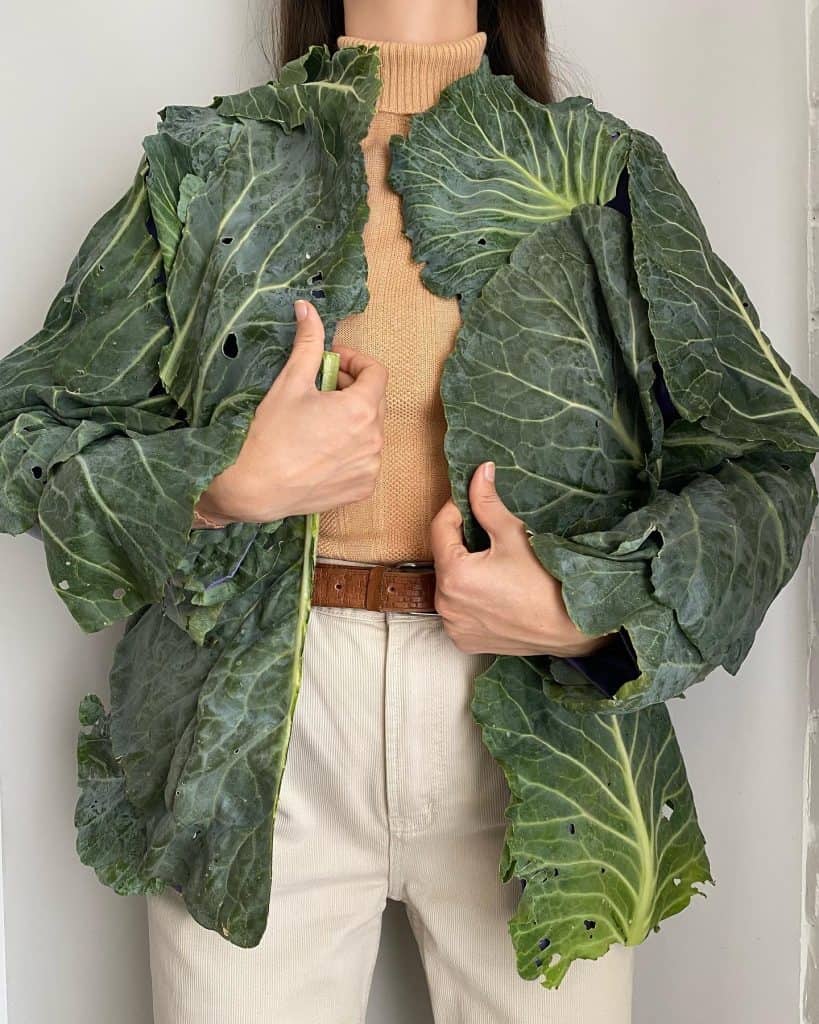
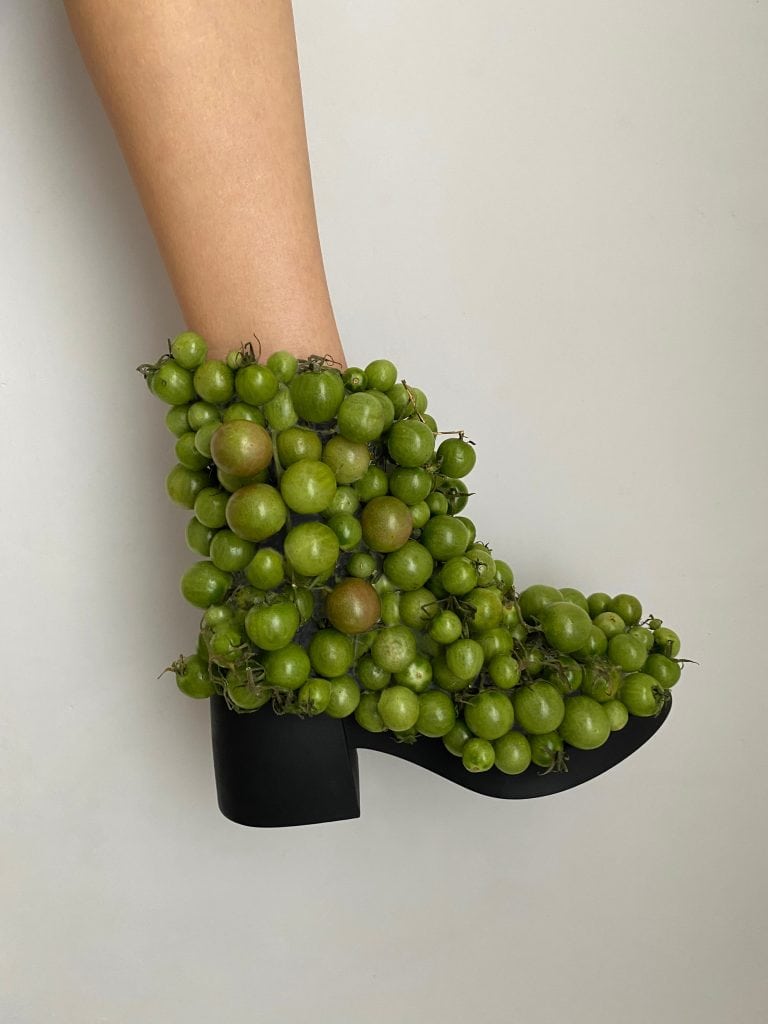
From a cabbage leaf coat to grape boots and floral hairpieces, Shukshina reinvents fashion through organic imagination. Courtesy of Ekaterina Shukshina.
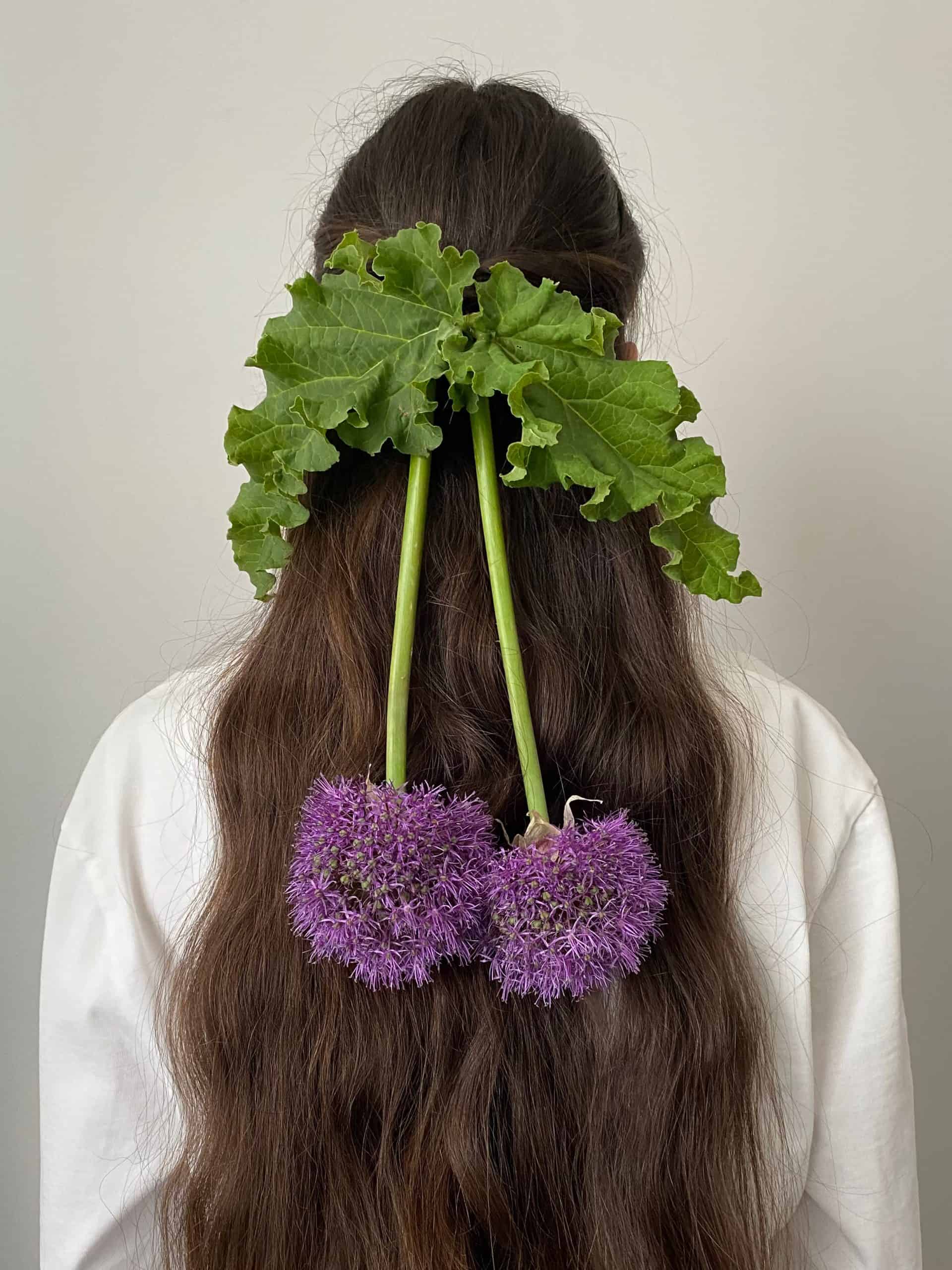
Organic symbol
Certain works hold symbolic weight in her journey. In particular, the Chanel zucchini ballet flats remain defining. “They were one of the first products I created in my creative career. It was with the publication of these shoes that I began to grow my social media audience.” As a result, these shoes marked a turning point. “I remember feeling incredibly inspired and creative at the time. This coincided with a period in my life when I quit my previous job and moved far away from home, determined to start anew. Consequently, I felt that I had to continue my creative pursuits no matter what. Finally, this creation became a lasting emblem of her artistic identity.
Where to discover this wonderful organic art?
For now, her work can be discovered mainly on Instagram (link here). She also plans to expand. “In the plans also to develop and other platforms (YouTube, Pinterest, personal website). In the near future, a joint work with clothing brands is expected, but so far it is in the stage of discussion of ideas.” She continues to create in the abundance of summer. “Now is my favorite season, when there is an abundance of flowers, vegetables, fruits and berries, so I create now for myself, for the soul and pleasure.”
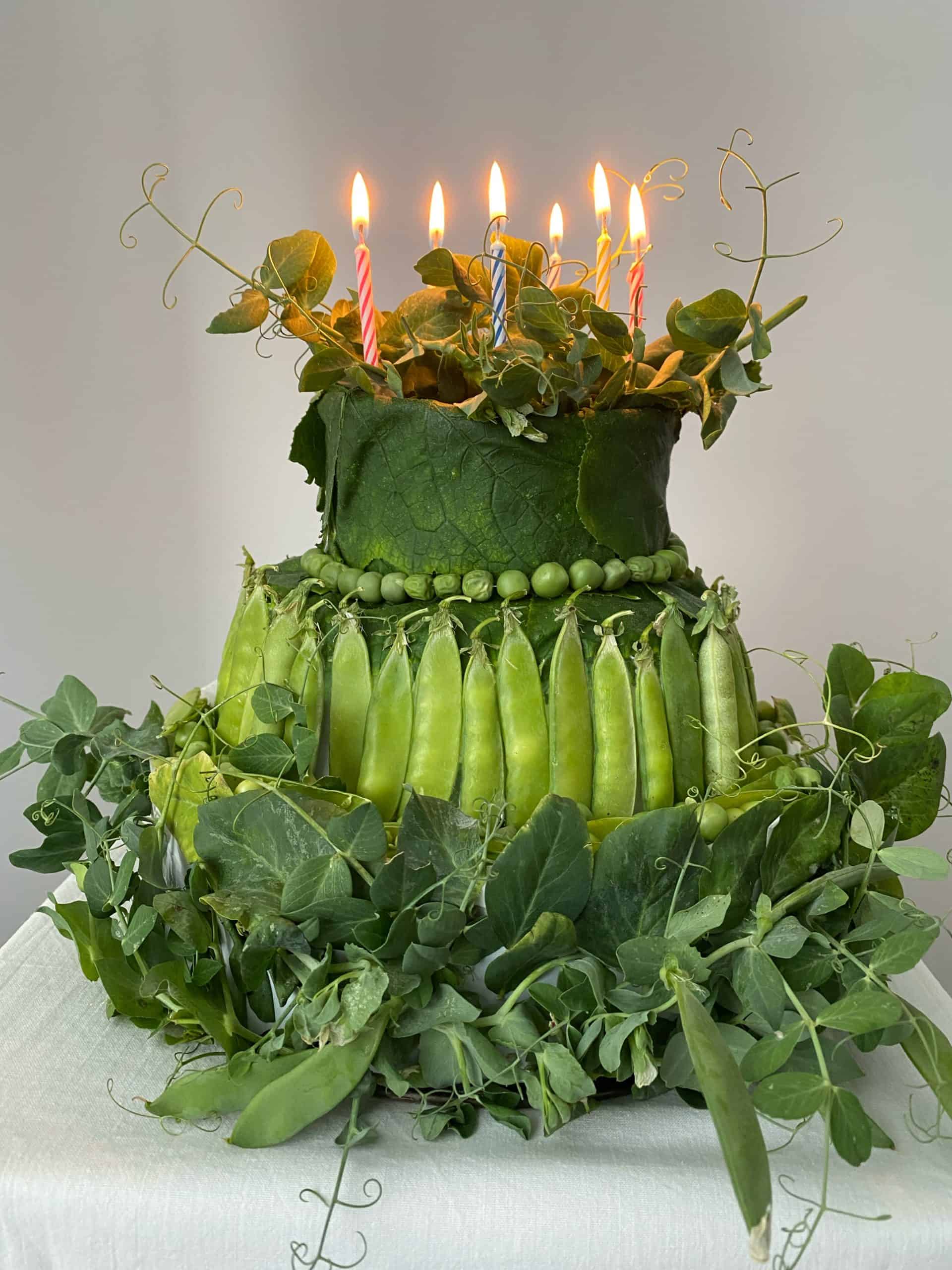
An organic birthday cake crafted from peas, leaves, and cabbage, turning vegetables into poetic celebration. Courtesy of Ekaterina Shukshina.
Organic fashion
Ekaterina Shukshina’s art transforms zucchinis into ballet flats, onions into pom-poms, and cabbage into couture. Her practice insists on seeing nature as material, symbol, and poetry. In a fashion world often dominated by excess, she shows that creativity can still sprout directly from the soil.
Did you enjoy EKATERINA SHUKSHINA ORGANIC ART? Discover CAROLINA RITZLER CHIC AND CONFORTABLE.
Share this post
Marie Loire Moulin approaches fashion as an immersive language—one that expresses identity, character, and cultural influence. Echoing Jean Cocteau’s observation that “Fashion is what goes out of fashion,” Moulin embraces the paradox at the heart of her craft. For her, fashion is a living, breathing art form—constantly deconstructed, reimagined, and reshaped in response to the world around it.
What fuels Marie Loire’s creativity is the ability to blend worlds—to explore the intersections of fashion, technology, history, and art. She is inspired by how these disciplines collide to generate experiences that are not only visually compelling, but also deeply purposeful.
Moulin is particularly drawn to artistic expressions that serve as bridges—linking cultures, fusing tradition with innovation. Sustainability, for her, is not a buzzword but a foundation. She sees it as a long-term commitment to thoughtful creation, not a passing aesthetic.
As a stylist working with actors on film sets, Marie Loire thrives on transforming a director’s vision into living, breathing characters. Through wardrobe and silhouette, she builds atmospheres that tell stories—stories of emotion, intention, and presence.
Her creative drive extends into virtual reality and immersive art, where she explores how emerging technologies can shift perception and spark connection across cultural boundaries. For Moulin, the digital realm is just another canvas—one that, when used with care, has the potential to resonate as powerfully as the physical world.
Whether on set or in virtual space, Marie Loire seeks originality and depth. Her work is marked by richly layered references, a reverence for detail, and a belief that fashion—at its best—can speak not just to the eye, but to the mind.
Read Next

